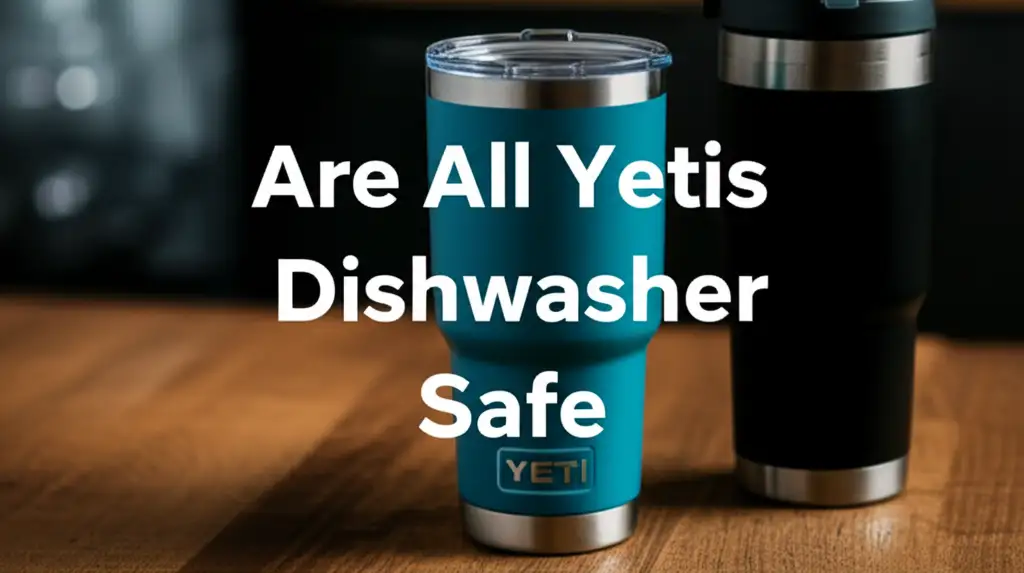· Elira Thomsen · Product Care · 14 min read
Does Bpa Free Mean Dishwasher Safe

Does BPA Free Mean Dishwasher Safe? Unveiling the Truth
We often see “BPA-free” labels on our plastic containers and kitchen items. This label gives us peace of mind about chemical safety. Many people then wonder if these BPA-free products are also safe for the dishwasher. It is a common question. The truth is, “BPA-free” does not automatically mean “dishwasher safe.” These are two different product attributes. Understanding this difference helps you care for your items properly. This article explains what BPA-free means and how it relates to dishwasher safety. We will look at material properties, heat effects, and how to identify truly dishwasher-safe items.
Takeaway
- BPA-free does not guarantee dishwasher safety. The terms refer to different properties.
- Check for specific dishwasher-safe symbols on your items.
- Heat is the main risk in dishwashers for many plastic items.
- Hand washing often extends the life of BPA-free plastics.
- Top rack placement helps if items are labeled “top rack dishwasher safe.”
Clear Answer to the Main Query
No, BPA-free does not mean dishwasher safe. “BPA-free” indicates the absence of Bisphenol A chemical. “Dishwasher safe” means an item can withstand a dishwasher’s hot water, harsh detergents, and drying cycles without damage or chemical leaching. These are distinct characteristics.
Understanding BPA-Free: What it Means for Your Health
BPA stands for Bisphenol A. It is an industrial chemical. Manufacturers use it to make certain plastics and resins. These materials include polycarbonate plastics and epoxy resins. Polycarbonate plastics are common in food containers and water bottles. Epoxy resins line food cans and water supply lines.
Concerns about BPA focus on its potential health effects. Some studies show BPA can leach into food or drinks from containers. This leaching increases when containers are heated. Exposure to BPA raises worries about impacts on the brain and prostate gland of fetuses, infants, and children. It may also affect children’s behavior. The U.S. Food and Drug Administration (FDA) states BPA is safe at current low levels in foods. However, many consumers still prefer to avoid it.
The “BPA-free” label assures consumers that the product does not contain this specific chemical. Companies began using this label due to consumer demand. This demand grew from health concerns linked to BPA. For example, many modern water bottles are now marketed as Peloton glass water bottles are dishwasher safe, focusing on material safety. This label is important for health-conscious shoppers. It helps them make informed choices about the materials their food and drinks touch.
Choosing BPA-free products reduces your exposure to Bisphenol A. It does not, however, tell you anything about the material’s durability or resistance to heat. Different BPA-free plastics exist. They have varying properties. Some might be sturdy and heat-resistant, while others are fragile. Always check labels for care instructions beyond just the “BPA-free” claim. This ensures you maintain both the safety and longevity of your items.
Dishwasher Safe Explained: Beyond Just Plastic
“Dishwasher safe” means a product can endure the conditions inside a dishwasher. These conditions include high temperatures, strong water jets, and harsh detergents. Products labeled “dishwasher safe” will not warp, melt, crack, or lose their finish. They also will not leach harmful chemicals or lose their integrity. This label is crucial for consumer convenience. It saves time and effort in cleaning.
Different materials react differently to dishwashing. Glass, ceramics, and certain metals like stainless steel are often inherently dishwasher safe. Their chemical bonds are stable under heat and water. However, plastics, wood, and some delicate materials require specific consideration. For instance, some non-stick pans like Is The Rock dishwasher safe? or Are Tasty Pans dishwasher safe? may have specific care instructions, even if their base material is metal. The coatings are often the weak point.
When an item is dishwasher safe, its manufacturer has tested it. They confirm it can withstand repeated cycles without harm. This testing considers both the material composition and the item’s construction. For example, a plastic container might be made from a heat-resistant polymer. Its design also needs to prevent water from getting trapped in crevices. This ensures proper drying and hygiene.
The term “dishwasher safe” can sometimes be more specific. Some items are “top rack dishwasher safe” only. The top rack is generally further from the heating element. It experiences lower temperatures. This distinction is vital for items that can handle some heat but not extreme heat. Always look for specific symbols or text on the product. These provide clear guidance on proper cleaning methods.
The Relationship Between Heat and Plastic Degradation
Heat significantly affects plastic materials. Dishwashers operate with hot water, often reaching temperatures of 130-170°F (54-77°C). The drying cycle can use even higher heat. When plastic gets too hot, its molecular structure changes. This change is called degradation.
Different types of plastic have different heat tolerances. Some plastics, like polyethylene (PE) or polypropylene (PP), have lower melting points. They can warp, melt, or deform under high heat. Others, like polycarbonate (PC) or certain types of high-density polyethylene (HDPE), are more heat-resistant. However, even heat-resistant plastics can degrade over time. Repeated exposure to high temperatures speeds this process.
Plastic degradation does not always involve obvious melting. It can also cause plastic to become brittle or cloudy. Over time, plastic may lose its shape or integrity. This makes it less useful or even unsafe. The surface can also become rough, making it harder to clean. Such damage creates places for bacteria to grow.
Heat can also cause chemicals to leach from plastic. Even if a plastic is BPA-free, other chemicals used in its manufacturing can still leach out. High temperatures increase the rate of chemical migration. This is why care instructions are so important. They help you avoid unintended chemical exposure. Following these instructions ensures your plastic items stay safe and effective for their intended use.
Why “BPA-Free” Doesn’t Automatically Mean Dishwasher Safe
The term “BPA-free” tells us about a chemical component. It confirms that Bisphenol A is not in the material. This is a health-related claim. It does not speak to the material’s physical durability or resistance to high temperatures. A product can be free of BPA but still unable to withstand a dishwasher cycle.
Many BPA-free plastics are sensitive to heat. For example, some common BPA-free plastics like Tritan or certain types of polypropylene are used for food containers. While designed for food contact, their heat resistance varies. A dishwasher’s high water temperatures and drying cycles can exceed these plastics’ safe limits. This can cause warping, melting, or cracking. This is similar to why specific items like Why are RTIC cups not dishwasher safe? even if made from sturdy materials, fail dishwasher tests due to vacuum seals or specific coatings.
Dishwasher detergents also play a role. These detergents are strong and abrasive. They can degrade plastic surfaces over time. This makes the plastic brittle or cloudy. This damage is separate from any chemical leaching. It affects the item’s appearance and function.
Consider a BPA-free plastic water bottle. It is safe to drink from without BPA exposure. However, if you put it in the dishwasher, it might deform. The hot water and powerful jets could warp its shape. This makes the bottle unusable. The “BPA-free” label protects your health regarding one chemical. It does not protect the item from physical harm during washing. Always look for a specific “dishwasher safe” label. Without it, hand washing is the safest option.
Identifying Dishwasher Safe Symbols and Materials
Knowing how to identify dishwasher-safe items is crucial. Manufacturers use specific symbols or text to indicate proper care. These symbols are usually found on the bottom of kitchenware, containers, or their packaging. Learning these symbols helps you avoid damage.
The most common symbol for “dishwasher safe” is a square with plates or glasses inside it. Water droplets or lines might appear over the plates. Sometimes, the symbol includes a temperature indication. This shows the maximum safe washing temperature. If the symbol shows only the top rack, it means the item should be placed only on the top shelf of the dishwasher. This is because the heating element is typically at the bottom. The top rack receives less direct heat.
Another common indicator is text. You might see “Dishwasher Safe,” “Top Rack Dishwasher Safe,” or “Hand Wash Only.” These clear instructions leave no room for doubt. If an item has no symbol or text regarding dishwashing, assume it is not dishwasher safe. Hand washing is the safest course of action in such cases.
Different materials have varying dishwasher compatibility.
- Glass and Ceramic: Most common glass and ceramic items are dishwasher safe. However, delicate glassware, hand-painted ceramics, or those with metallic accents might need hand washing.
- Stainless Steel: High-quality stainless steel items, like Are stainless steel mixing bowls dishwasher safe?, are generally dishwasher safe. They resist rust and corrosion. Watch out for items with insulation or coatings, as these might not be.
- Plastics: This category varies widely. Polypropylene (PP), high-density polyethylene (HDPE), and some Tritan plastics can be dishwasher safe. Polystyrene (PS) and low-density polyethylene (LDPE) usually are not. Always check the specific symbol for plastics.
- Wood: Wooden items are almost never dishwasher safe. The high heat and moisture can cause cracking, warping, or splintering. It also strips away natural oils.
- Cast Iron: Uncoated cast iron is generally not dishwasher safe. It can rust and lose its seasoning.
Always check the product’s base or packaging for these indicators. Following these instructions ensures your items last longer. It also prevents potential damage or safety issues.
Best Practices for Washing BPA-Free Items
Proper washing of BPA-free items ensures their longevity and safety. Even if an item is BPA-free, specific care helps it last longer. It also prevents any unintended degradation. Always prioritize the “dishwasher safe” label over just “BPA-free.”
If an item is labeled “dishwasher safe” and “BPA-free”:
- Place on the top rack: Most dishwasher-safe plastics are only safe for the top rack. The heating element is typically at the bottom. This means the bottom rack gets much hotter.
- Use a gentle cycle: If your dishwasher has a “plastics” or “light wash” setting, use it. These cycles use lower temperatures and less aggressive water jets.
- Avoid high heat dry cycles: Air drying or using a low-heat dry setting is best. High heat can still warp or degrade even dishwasher-safe plastics over time. You can often turn off the heated dry cycle on your machine.
- Use mild detergent: Harsh or abrasive detergents can scratch plastic surfaces. Use a liquid or gel detergent instead of powder pods for plastic items.
If an item is “BPA-free” but not labeled “dishwasher safe,” or if you are unsure, hand washing is the safest method:
- Use warm, not hot, water: Hot water can still warp plastic, even during hand washing. Warm water is sufficient for cleaning.
- Use mild dish soap: A gentle liquid dish soap is perfect. Avoid abrasive cleaners or scrubbing pads that can scratch the surface.
- Soft sponge or cloth: Use a soft sponge or cloth to clean the item. Avoid steel wool or harsh brushes.
- Rinse thoroughly: Make sure to rinse off all soap residue.
- Air dry or towel dry: Let the item air dry completely or dry it with a clean towel. This prevents water spots and bacterial growth.
Hand washing extends the life of many BPA-free plastic items significantly. It prevents warping, clouding, and brittleness. It is a simple way to preserve your kitchenware.
Potential Risks of Dishwashing Non-Safe BPA-Free Products
Dishwashing items not meant for the dishwasher carries several risks. These risks go beyond simple damage to the item itself. They can impact your health and your dishwasher’s performance. Understanding these dangers helps you make better choices.
One major risk is material degradation. Plastics not designed for high heat will warp, melt, or crack. This makes them unusable. A warped lid will not seal. A melted container cannot hold food. This leads to wasted money as you replace damaged items.
Even if an item doesn’t visibly melt, it can still degrade. The plastic can become brittle over time. This makes it prone to cracking or breaking with continued use. It might also become cloudy or discolored. This affects its appearance and hygiene. Rough surfaces are harder to clean.
Chemical leaching is another concern. While an item is BPA-free, heat can still cause other chemicals to leach from the plastic. Plastic manufacturers use various additives. These additives provide properties like flexibility or color. High temperatures can increase the migration of these chemicals into your food. This defeats part of the purpose of choosing BPA-free products.
Damage to your dishwasher is also possible. A melting plastic item can leave residues inside the machine. These residues can clog filters or spray arms. This impairs your dishwasher’s cleaning ability. It could even lead to costly repairs. Small broken pieces of plastic might also get into the pump or drain. This causes malfunctions.
In summary, ignoring care labels is risky. It can lead to ruined products, potential chemical exposure, and damage to your appliance. Always check if an item is dishwasher safe. If in doubt, hand wash it to protect your items and your health. This simple step prevents many problems.
FAQ Section
Is BPA-free plastic safer if it’s hand-washed?
Hand washing BPA-free plastic is often safer for the item’s longevity. It avoids high dishwasher temperatures and harsh detergents. This reduces the risk of warping, cracking, or degradation over time. It also minimizes the potential for any chemicals to leach due to heat exposure. Hand washing helps preserve the item’s integrity and appearance.
Can all plastics be damaged in a dishwasher?
Not all plastics are damaged in a dishwasher. Some plastics are designed to be dishwasher safe. These plastics have higher heat resistance. Polypropylene (PP) and some types of Tritan are examples. However, many common plastics, like polystyrene (PS) or low-density polyethylene (LDPE), will warp or melt. Always check for a specific “dishwasher safe” label.
What are common signs that my BPA-free item is not dishwasher safe?
Signs include warping, melting, or cracking after a wash cycle. The plastic might become cloudy or discolored. It can also lose its original shape. If the item feels brittle or appears dull, it likely suffered heat damage. These indicate the material is not meant for dishwasher conditions.
Does “top rack only” mean it’s fully dishwasher safe?
“Top rack only” means the item can withstand some dishwasher conditions. The top rack is further from the heating element. It experiences lower temperatures than the bottom rack. It is not fully dishwasher safe for all cycles or high heat drying. Follow this instruction strictly to prevent damage.
Are BPA-free items more durable than items with BPA?
BPA-free status refers to chemical composition, not durability. Durability depends on the specific type of plastic used. Some BPA-free plastics are very durable, others are not. Products made with BPA (polycarbonate) were often very strong. A “BPA-free” label does not mean the item is automatically more resistant to impacts or heat.
How can I make my BPA-free plastics last longer?
To make BPA-free plastics last longer, hand wash them with warm water and mild soap. If they are labeled “top rack dishwasher safe,” use the top rack and avoid high-heat dry cycles. Store them away from direct sunlight or extreme temperatures. Proper care preserves their shape, clarity, and overall lifespan.
Conclusion
The journey to understanding “Does BPA free mean dishwasher safe?” reveals a clear distinction. “BPA-free” assures you about the absence of a specific chemical. “Dishwasher safe” guarantees an item’s physical integrity against harsh washing conditions. These two labels are independent. You cannot assume one implies the other. Many BPA-free plastics simply cannot endure the high heat and strong detergents found in a dishwasher.
Heat is the primary factor that causes plastic degradation. This includes warping, melting, and potentially increasing the leaching of other chemicals. This happens even if the plastic is BPA-free. Always look for the explicit “dishwasher safe” symbol or text on your kitchenware. If it is not present, hand washing is the safest and most recommended method. This simple practice helps preserve your items. It also protects your health from unintended material breakdown.
By understanding these labels, you become a smarter consumer. You can make informed decisions about product care. Prioritize both safety and longevity for your household items. Always check the product’s care instructions. Protect your BPA-free kitchenware by giving it the right cleaning method. This ensures it serves you well for many years to come.





